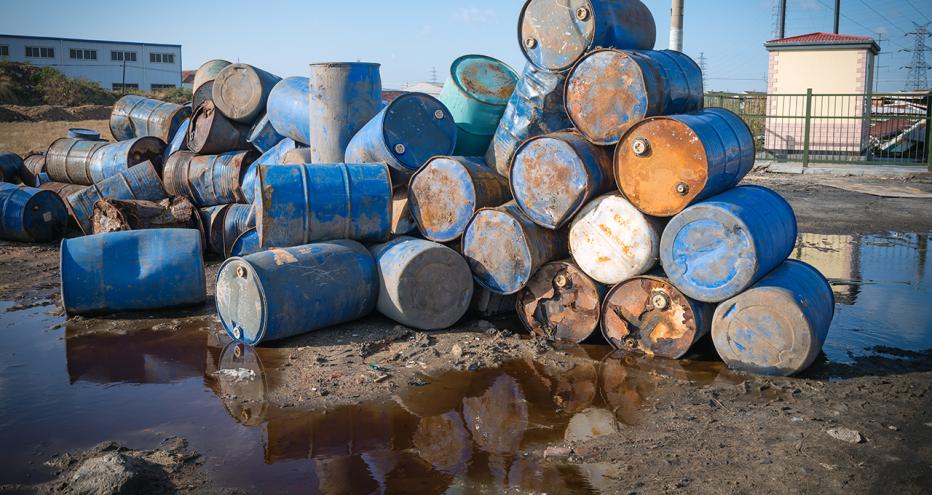
While much of the recent emerging contaminants headlines has focused on per- and polyfluoalkyl substances (PFAS), 1,4-dioxane, a common solvent stabilizer and probable human carcinogen, is manifesting as yet another significant drinking water and environmental contaminant.
1,4‐Dioxane is a recalcitrant, synthetic cyclic ether whose reaction‐inhibiting properties make it useful in preventing breakdown of chlorinated solvents used commonly in metal degreasing and maintenance activities. Additional significant sources include the manufacture of textiles (e.g., polyester); household cleaners and detergents; cosmetics; paints, varnishes, and paint remover; industrial processing of fats and oils; printing inks and pharmaceuticals.
Although this chemical has been identified at environmental sites for more than a decade, recent discovery of widespread occurrence in U.S. drinking water and recent toxicological studies have resulted in evolving regulations, keeping 1,4‐dioxane at the forefront of chemicals of emerging concern.
Sampling under the U.S. Environmental Protection Agency (EPA) Unregulated Contaminant Monitoring Rule (UCMR‐3) revealed greater than 10% of U.S. drinking water supplies, representing over 90 million people in 45 states, are impacted by 1,4‐dioxane. This is in comparison to only 1% of U.S. drinking water and 10 million people impacted by PFAS.
The EPA has identified 1,4‐dioxane as a probable human carcinogen, and updated toxicity figures in EPA’s Integrated Risk Information System (IRIS) have driven risk‐based screening levels lower for many regulatory programs. There is an EPA 10E‐4 cancer risk value of 35 μg/L. In 2015, the EPA lowered its Regional Screening Level from 0.78 μg/L to 0.46 μg/L for 1,4‐dioxane in tap water. Prior to this update, the inhalation exposure route had not been included. The EPA’s addition of inhalation risks has introduced 1,4‐dioxane to vapor intrusion assessments, although the likelihood of 1,4-dioxane being present in soil gas is low.

Significant interest from the regulatory community, especially states like New York, Michigan and North Carolina where high profile 1,4-dioxane impacts reported in the media have driven community stakeholder activism, has led to lowering of existing standards and introduction of new standards where there previously were none. Almost half the states have issued 1,4-dioxane guidance levels or promulgated standards for drinking water or groundwater, and several states have proposed values that will be finalized in the near future.
Image: U.S. Drinking Water Supplies with detectable levels of 1,4-dioxane (Environmental Working Group)

In January 2020, CRC Press published the Second Edition of the seminal book: Environmental Investigation and Remediation: 1,4-Dioxane and other Solvent Stabilizers, by Thomas K.G. Mohr, William H. DiGuiseppi, James W. Hatton, and Janet Anderson. Filled with updated information, equations, tables, figures, citations and case studies the Second Edition provides the full range of information on 1,4‑dioxane. It offers passive and active remediation strategies and treatment technologies for 1,4‑dioxane in groundwater and provides the technical resources to help readers choose the best methods for their situation. This edition also includes new information on remediation costs and reflects the latest research in the field.
Jacobs’ subject matter experts, Bill DiGuiseppi and Jim Hatton, co-authored the book, which has chapters written by Jacobs’ scientists Barrie Selcoe - Human Health Risk Assessment, Bill Kappleman - Ecological Risk Assessment and Jeremy Bishop - Analytical Methodologies.
Several technical publications have been written or co-authored by our subject matter experts, including:
- Li, M., Liu, Y., He, Y., Mathieu, J., Hatton, J., DiGuiseppi, W., and Alvarez, P., “Hindrance of 1,4-dioxane biodegradation in microcosms biostimulated with inducing or non-inducing auxiliary substrates.” Water Research, Volume 112, 1 April 2017, Pages 217-225
- Gedalanga, P., Madison, A., Miao, Y., Richards, T., Hatton, J., DiGuiseppi, W.H., Wilson, J., and Mahendra, S., “A Multiple Lines of Evidence Framework to Evaluate Intrinsic Biodegradation of 1,4-Dioxane.” Remediation, Winter 2016, accessible at: http://onlinelibrary.wiley.com/doi/10.1002/rem.21499/full
- Favara, P., Tunks, J., Hatton, J., and DiGuiseppi, W.H., “Sustainable Remediation Considerations for Treatment of 1,4-Dioxane Treatment in Groundwater.” Remediation, Winter 2016, accessible at: http://onlinelibrary.wiley.com/doi/10.1002/rem.21501/full
- DiGuiseppi, W.H., Walecka-Huchison, C., and Hatton, J.W., “1,4-Dioxane Treatment Technologies.” Remediation, Winter 2016, accessible at: http://onlinelibrary.wiley.com/doi/10.1002/rem.21498/full
Upcoming 1,4-Dioxane Webinar, Speaking and Training Events
On January 23, 2020, Bill DiGuiseppi is speaking on the topic of 1,4-Dioxane Occurrence, Fate, Regulatory Issues, and Treatment Technologies for a Continuing Education Webinar sponsored by the Society of American Military Engineers (SAME) Environmental Community. The webinar will provide a brief introduction to 1,4-dioxane, summarize the state of the regulatory landscape and discuss risk and toxicology developments, including a discussion about potential indoor air issues associated with 1,4-dioxane.
On January 23, 2020, Bill DiGuiseppi is speaking at a meeting of the Consortium for Research and Education on Emerging Contaminants (CREEC) in Golden, Colorado, on 1,4-Dioxane: The Neglected Emerging Contaminant.
And at Battelle’s June 2020 Twelfth International Conference on Remediation of Chlorinated and Recalcitrant Compounds in Portland, Oregon, Bill DiGuiseppi will be conducting 1,4-dioxane training on behalf of the Interstate Technology & Regulatory Council (ITRC).
Environmental Stewardship
We partner with government agencies, municipalities, private sector companies and leading environmental organizations to safely clean-up legacy liabilities for redevelopment and deliver proven industry expertise on new infrastructure, sustainability and environmental health and safety initiatives around the globe. To learn more, visit www.jacobs.com/capabilities/environmental.












































